Slides from the TeleSummit are available on Slideshare
The speaker list for today’s sold-out Women Who Tech TeleSummit is amazing, amazing, amazing …Â @jillfoster, @digitalsista, @blogdiva, @missrogue, @randomdeanna, @conniereece along with TeleSummit organizer Allyson Kapin of Rad Campaigns (aka @WomenWhoTech), and that’s just the first hour!
There are some guys speaking as well at this year’s event, including @clayshirky and @kevinmarks along with @maryhodder, @lynneluvah, and @WomenWhoTech examining how people in a position of power judge and promote others on the Self-promotion: Is This Really a Rant About Gender? panel. And I’m particularly psyched about Building the ultimate user experience, including experience goddess @ooonie of IfWeRanTheWorld (which I just blogged about in Emo-ware: What does emotional software look like? and If She Ran the World …)
Some of the other great topics include launching your own startup, diversifying your tech teams, and female ferocity. And then there are afterparties in DC, New York, and SF. Maybe next year we can do one in Seattle too 🙂
The timing’s perfect, hot on the heels of the kerfuffle sparked by @ShiraOvide’s Wall Street Journal article Addressing the Lack of Women Running Tech Startups and TechCrunch founder @arrington’s rant Too Few Women In Tech? Stop Blaming The Men. Or at least stop blaming me. Drama aside, the results were really positive: a panel on “women’s issues” added to TechCrunch Disrupt, a ton of attention to the issue, highlighting a lot of talented women innovators.
So while on the one hand it’s a tempest in a teapot, it’s also a real #diversitywin (as we like to say on Twitter). As @cathybrooks (who will be on the Female Ferocity panel along with TechCrunch CEO @heatherharde) says in Moving Forward, Seizing the future, women aren’t just complaining; we’re doing something about it.
And then the following week, after @ChiaraAtik’s article in Guest of a Guest discussed TechStars overwhelmingly male mentor pool in New York, @davetisch immediately reached out to try to include more women.**Â Good outcome, and remarkably drama free!
So I’m noticing a pattern here — a positive one, for a change.
The comments of Guys talking to guys who talk about guys track the steady stream of high-quality data and high-profile media attention on gender equity in tech startups since the beginning of the year. It’s a self-reinforcing virtuous cycle: with more stories being written about it, there’s more opportunity for successful women to be quoted no matter what their views are on gender equity. More women getting media attention means more successful women-led companies and non-profits and more role models … and more stories to cover …
Twitter plays an important role in this, making it easier for women and allies to work together.  I got to know Allyson and most of the other women I mentioned here via Twitter, and it’s a big part of the way people on all sides of the issue communicated during the kerfuffle. And as @maegancarberry suggested back in 2009, Twitter magnifies the power of groups of people with a few hundred or a few thousand followers who can work together effectively. As Hollaback New York said, quoting @blogdiva,
The panel discussions and slide decks at the Women Who Tech TeleSummit give a chance to go into more detail than you can fit into 14o characters, and the in-person after parties provide chances for deeper connections. So as well as increasing visibility, it’s a great chance to build on the successes, share information, ask and answer questions and plan what’s next.
And it’s also ideal for anybody who’s interested in diversifying their conference, company, non-profit — or just learning more about startups, user experience, social media ROI, self-promotion, diversity, or any of the other topics on the list. Even if you’re not dialing in, you can follow along on Twitter via the #wwt hashtag.  And if you’re interested in diversifying your network, well … talk about an opportunity …
See you there, I hope!
jon
* The title’s an allusion to Clay’s A Rant About Women earlier this year, which sparked a similar kerfuffle by blaming women for their lack of visibility and suggesting they needed to be more like stereotypical self-aggrandizing male jerks if they wanted to get noticed. The women involved with Women Who Tech are great counter-examples 🙂
** speaking of which: TechStars Seattle mentor pool is overwhelmingly male too, and it’d be great to do something about that.
originally published on September 13. updated on September 15.





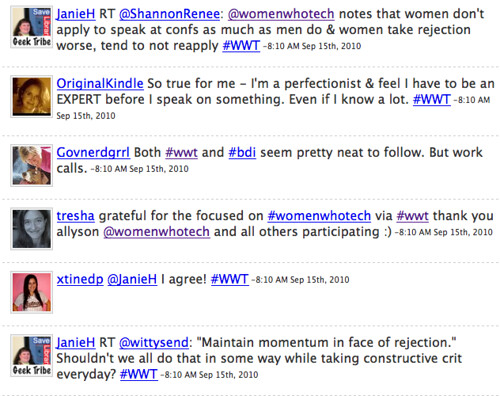
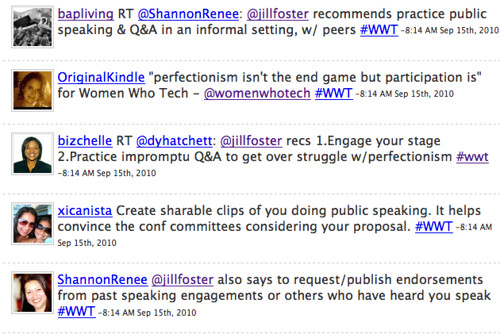
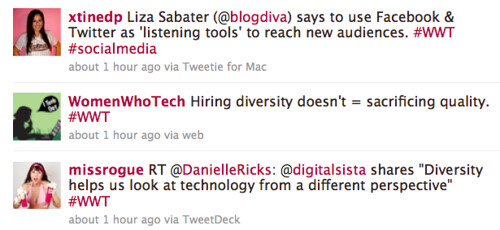
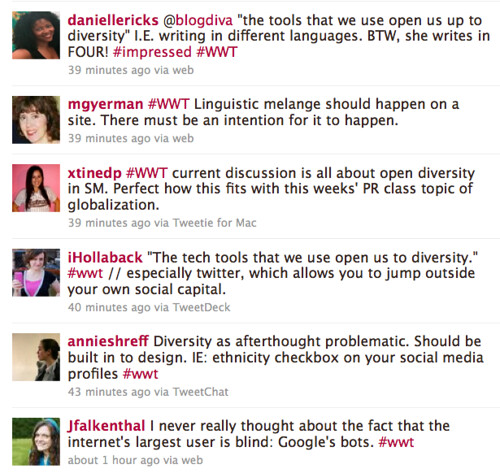
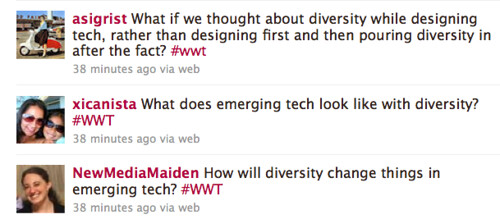

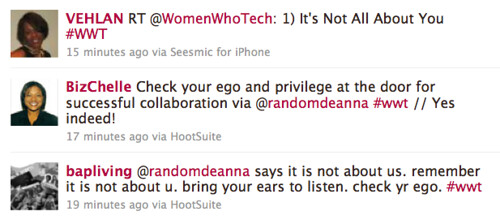
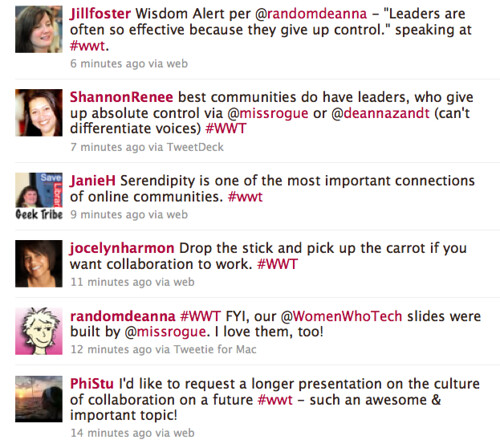





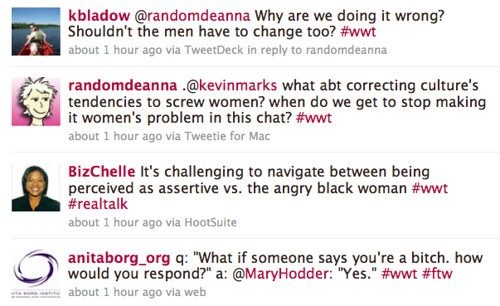

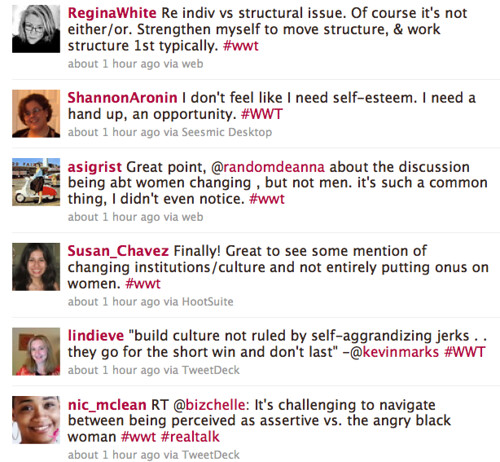


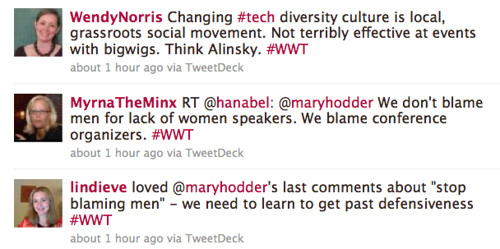




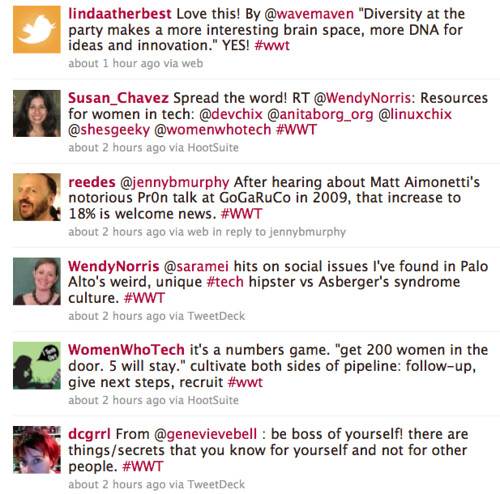

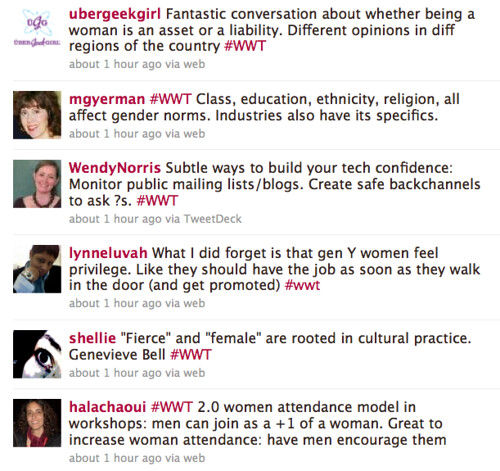










Leave a Reply